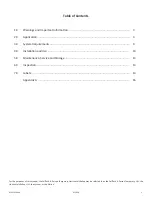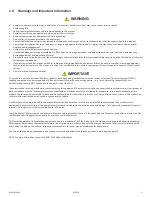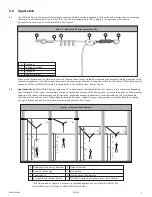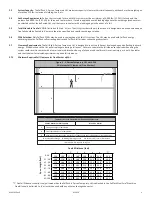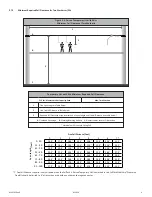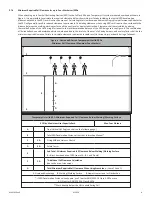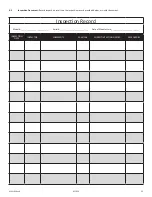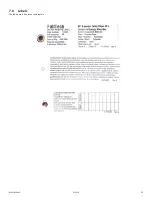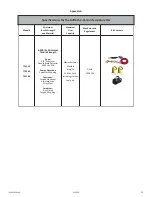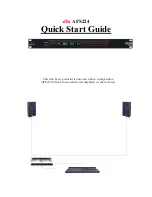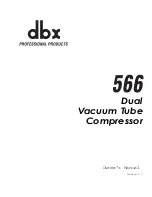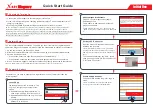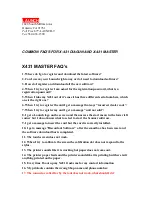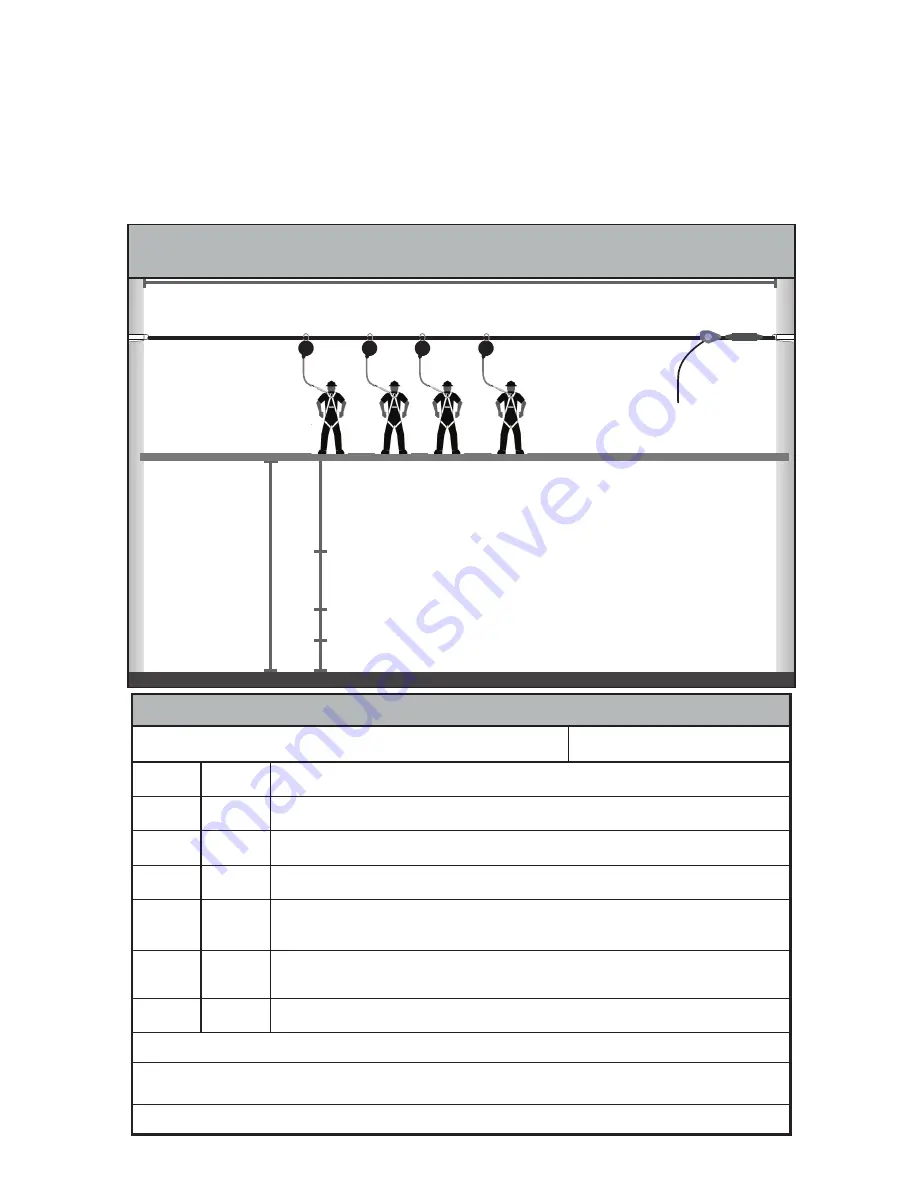
Temporary HLL
with SRD Minimum Required Fall Clearance Below Walking/Working Surface
310 lbs. Maximum User Capacity Each
Max. Four Workers
A
Final Vertical HLL Sag (see chart on the following page)
B
Total SRD Deceleration Distance from User Instruction Manual*
C
1 ft
D-ring Shift and Harness Stretch
D
3 ft
Safety Factor
E
Sub Total - Minimum Required Fall Clearance Below Walking/Working Surface
for direct overhead use of SRD (sum of A, B, C and D only)
F
1 ft
* Additional Fall Clearance Calculation
due to the use of stanchions
G
Total Minimum Required Fall Clearance When Using Stanchions
- (Sum of E and F)
1.
Overhead Anchorage
2.
Walking/Working Surface
3.
Nearest Lower Level or Obstruction
* If SRD Deceleration Distance is unknown, use 2 feet for ANSI Z359.14 Class A SRDs or use
4-1/2 feet for ANSI Z359.14 Class B SRDs.
** Work directly below the HLL to avoid Swing Fall
Figure 6 - Overhead 4-Person Temporary HLL
with SRDs
Minimum Fall Clearance (Maximum Four Workers)
E
2
3
1
A
B
C
D
2.7.4
Minimum Required Fall Clearance for up to Four Workers w/SRDs
When attaching up to four Self-Retracting Devices (SRD) to the FallTech 4-Person Temporary HLL
system mounted overhead as shown in
Figure 5, it is permissible to calculate the required clearance below the working surface by including the typical SRD deceleration
distances detailed in the SRD user’s instruction manual. Calculating total clearance requirements using typical performance attributes for
the SRD will generally result in reduced clearance requirements. Calculating clearance when using SRD’s will require the user identify the
distance between the walking-working surface and the next level or nearest obstruction. Clearance shall be calculated by adding
the total deflection of the HLL during a fall event to the total deceleration distance of the SRD being used, see Figure 6. This combination
of lifeline deflection and deceleration distance, when added to the stretch of the user’s full body harness, and a safety factor, shall be the
minimum required clearance. Failure to calculate clearance requirements could result in serious injury or death during a fall event.
MHLL05 Rev A
012920
8


